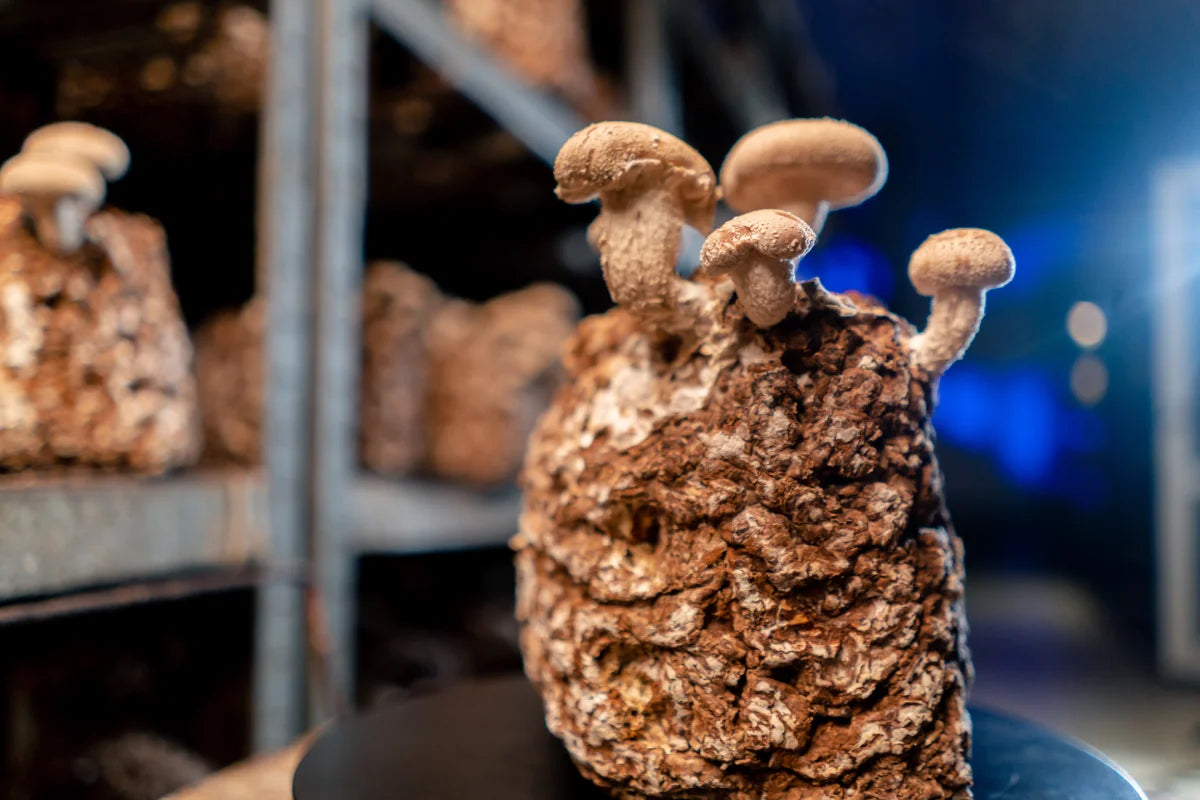
Does Mushrooms Need Light to Grow?
Does Mushrooms Need Light to Grow? Essential Guide for Mushroom Cultivation
Mushrooms are fascinating organisms because they differ from plants in their nutritional needs. Unlike plants, mushrooms don't photosynthesize, so they don't require light in the same way. However, light can impact certain aspects of their growth and development.
While mushrooms don't need light to grow, it can still influence their behavior. For example, some mushrooms exhibit phototropic responses, meaning they might grow towards a light source if one is present. But this is more about orientation rather than the actual growth process.
The growth of mushrooms primarily depends on other factors such as temperature, humidity, substrate composition, and proper air circulation. In fact, many commercial mushroom farms grow their fungi in complete darkness because light isn't a crucial factor for the fruiting (mushroom-producing) stage.
How Light Impacts Mushroom Cultivation?
Light doesn’t play a direct role in the growth of mushrooms since they don’t rely on photosynthesis. However, light can still have some effects on mushroom cultivation:
Orientation: Mushrooms might exhibit phototropic behavior, meaning they grow towards a light source. In some cases, this can help growers predict the direction of mushroom growth.
Pinning and Fruiting: Light can signal to mushrooms that it’s time to start the fruiting process. While mushrooms don’t need light to grow, exposure to light or changes in light patterns can trigger the formation of pins (baby mushrooms) and subsequently the fruiting stage.
Quality and Appearance: Light can affect the appearance of mushrooms. For instance, some varieties might develop different colors or shapes depending on light exposure. Consistent or specific light conditions can also impact the texture or thickness of the mushroom cap.
Timing: Controlling the duration and intensity of light exposure can be used as a technique to regulate the timing of fruiting in some mushroom species. This can be particularly useful in commercial cultivation to manage production schedules.
Fruiting Bodies Development: While mushrooms don’t need light for their growth, they do require specific environmental triggers to start their fruiting stage. Light can act as one of these triggers. Certain wavelengths or changes in light patterns can signal to the mycelium that conditions are suitable for fruiting. This is especially true for species like the common button mushroom (Agaricus bisporus).
Light Quality: Different wavelengths of light can affect mushroom growth. For instance, blue light has been observed to promote the formation of primordia (early stage of mushroom growth) in some species, while red light can influence the maturation and elongation of mushroom stems.
Photoperiod Control: Manipulating the duration of light exposure (photoperiod) can be used to control the timing of mushroom fruiting. Growers often use this technique to synchronize the growth and harvesting cycles for commercial purposes.
Consistency in Cultivation: While mushrooms can grow in the absence of light, maintaining consistent environmental conditions, including light, can lead to more predictable and controlled growth. This predictability is crucial in commercial mushroom farming to ensure a steady supply of produce.
Mushroom Morphology: Light conditions can affect the physical appearance of mushrooms. Some mushrooms might develop differently in response to varying light levels, resulting in alterations in color, size, or shape.
In controlled environments like commercial mushroom farms or controlled home setups, growers manipulate light conditions to trigger specific growth stages or to achieve desired characteristics in the mushrooms. However, it’s important to note that while light can influence certain aspects of mushroom cultivation, it’s not a critical factor for their growth as it is for plants. Other factors like temperature, humidity, and substrate composition play more significant roles in successful mushroom cultivation.

Cultivating Mushrooms in Your Home
Cultivating mushrooms at home can be a rewarding and relatively simple process.
Here's a basic guide to get started:
- Choose the Right Mushroom Species:
Some popular species for home cultivation include oyster mushrooms, shiitake, and button mushrooms. Each has its own ideal growing conditions.
- Obtain a Growing Kit or Materials:
You can purchase ready-to-grow mushroom kits that include spawn (mycelium), a substrate, and instructions. Alternatively, you can gather materials separately:
Substrate: This can be straw, sawdust, coffee grounds, or other organic matter suitable for your chosen species.
Spawn: This is the mycelium or "seed" of the mushroom. You can buy it online or from specialty stores.
Growing containers or bags: Choose containers suitable for the chosen substrate.
- Prepare the Growing Environment:
Cleanliness is crucial. Sterilize or pasteurize your substrate to eliminate competing microorganisms that could hinder mushroom growth.
Maintain a clean and controlled environment. Mushrooms thrive in environments with stable temperature, humidity, and airflow.
- Inoculation and Incubation:
Mix the spawn with the prepared substrate in your chosen container.
Allow the mycelium to colonize the substrate. This phase might require darkness, depending on the species.
- Fruiting Stage:
When the substrate is fully colonized by mycelium, introduce conditions conducive to fruiting. This often involves exposure to fresh air, humidity, and sometimes specific light conditions.
Mist the substrate regularly to maintain humidity levels.
- Harvesting:
Mushrooms will start to grow and develop. Harvest them when they reach the desired size but before they release spores.
- Maintenance and Care:
Throughout the process, monitor the growing environment for any signs of contamination or irregularities. Adjust conditions as needed.
Remember, different mushroom species might have specific requirements, so it's essential to follow instructions tailored to your chosen variety. Starting with ready-to-grow kits can be helpful for beginners, providing step-by-step guidance. With proper care and attention to detail, cultivating mushrooms at home can be a fun and fulfilling experience!
Tips and Considerations for Cultivating Mushrooms at Home
Temperature and Humidity:
Maintain the right temperature and humidity levels according to the needs of your chosen mushroom species. Oyster mushrooms, for example, thrive in slightly cooler temperatures compared to shiitake mushrooms.
Sterilization and Sanitation:
Sterilize tools, containers, and working surfaces to prevent contamination. This is crucial to ensure that unwanted fungi or bacteria don’t compete with the mushroom mycelium.
Ventilation and Airflow:
Proper airflow is important for healthy mushroom growth. Ensure there’s adequate ventilation, especially during the fruiting stage.
Light Requirements:
While most mushrooms don’t require direct light for growth, they might respond to light cues during the fruiting stage. Research the specific light preferences of your chosen species. For instance, some species like oyster mushrooms might benefit from indirect light.
Harvesting Techniques:
Harvest mushrooms gently by twisting or cutting them at the base to avoid damaging the mycelium. Use a clean, sharp knife or scissors.
Successive Flushes:
After the initial harvest, some mushroom species can produce additional crops or "flushes." Follow instructions for encouraging subsequent flushes, which might involve providing the right environmental conditions.
Patience and Observation:
Mushroom cultivation requires patience. Monitor the growth progress regularly, and don’t be discouraged if it takes time. Learning from each batch is part of the process.
Troubleshooting:
If you encounter problems such as mold, unusual smells, or abnormal growth, research and address these issues promptly. Sometimes, minor adjustments in environmental conditions can make a significant difference.
Resources and Communities:
Utilize online resources, forums, or local community groups focused on mushroom cultivation. They can provide valuable tips, troubleshooting advice, and support for beginners.
Starting with easier-to-grow varieties like oyster mushrooms can be a good introduction to home cultivation. As you gain experience and confidence, you can explore cultivating different species and experimenting with various substrates and techniques.
Happy mushroom growing!


